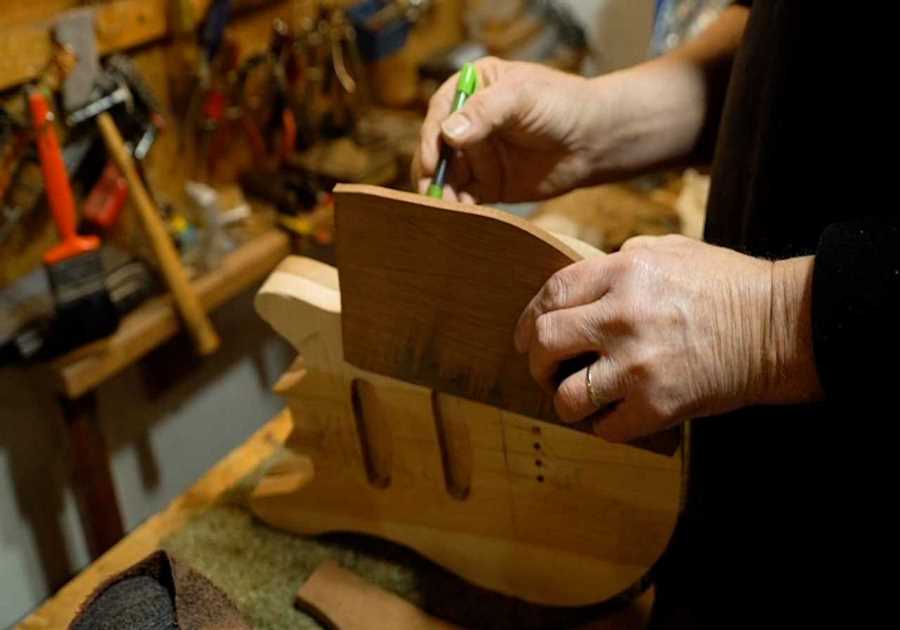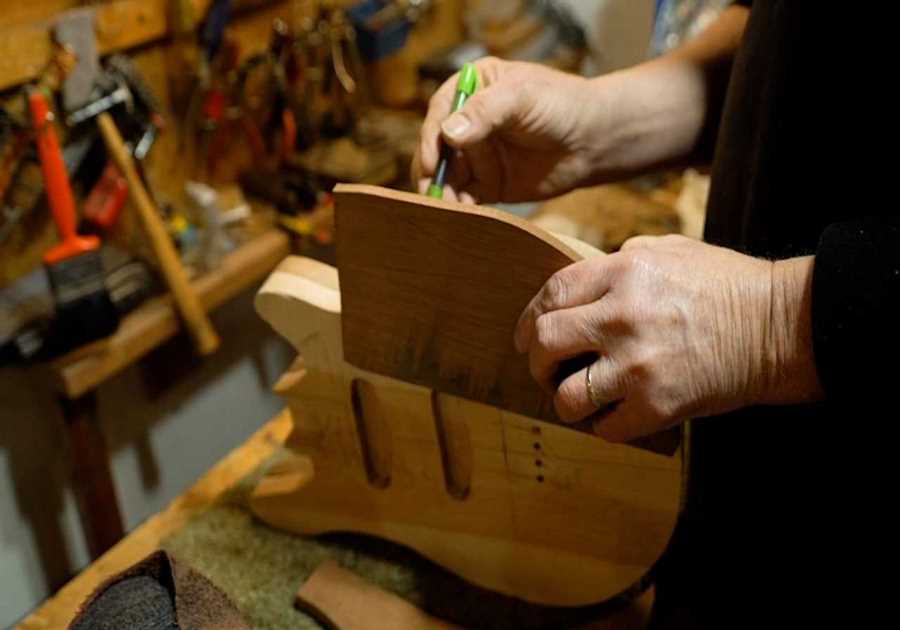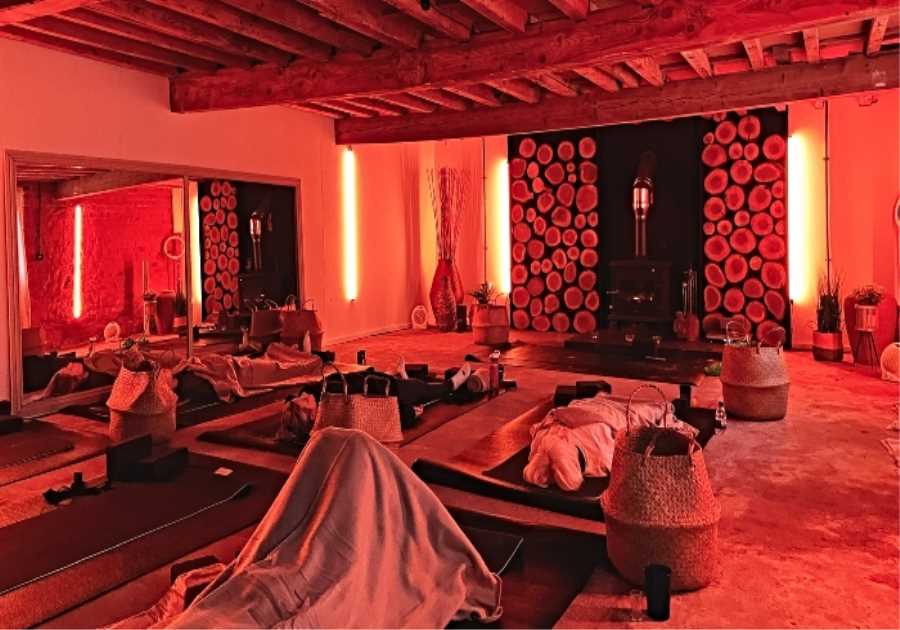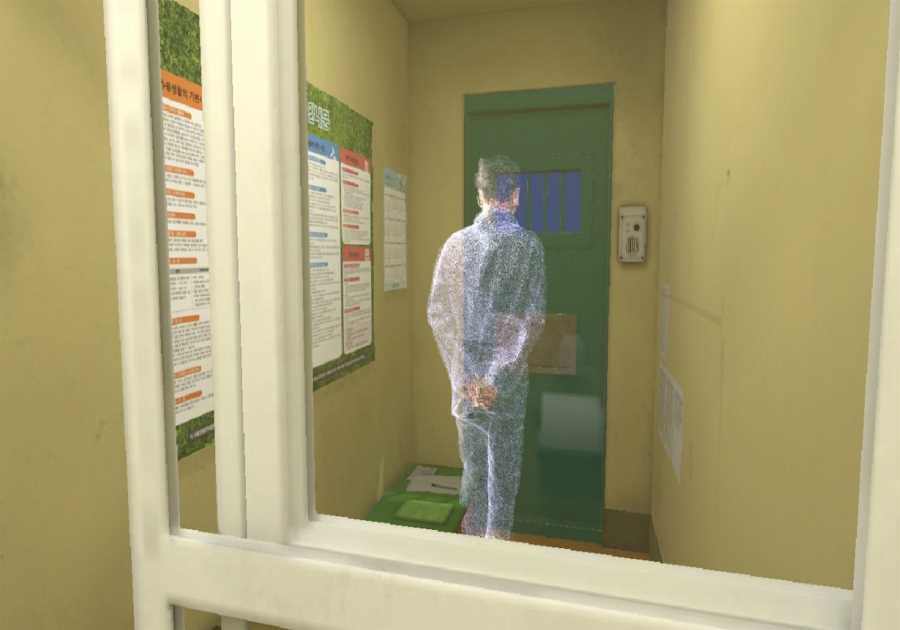This is article 5 in the series God on Psychedelics. To read the complete series, visit the series home page.
Sara Morrill was born on a U.S. Air Force base in Mesa, Arizona in 1991, two days before the Fourth of July. Her parents, grandparents and great-grandparents were conservative evangelical Christians going all the way back to an ancestor who came over on the Mayflower.
Growing up, Sara and her siblings attended Baptist, Calvinist and non-denominational Christian congregations. Around the age of twelve, Sara started feeling “a little outside the box in my faith.”
In Sunday school, she’d been showed the “Left Behind” videos, a dramatic series about how the End Times were coming and only the faithful would be raptured. “I was afraid that people in my life would disappear from earth and that I wouldn’t be chosen to go to heaven.”
After college, Morrill landed a job working at a holistic treatment center in Hawaii that used horticultural therapy to help adolescents struggling with mental health issues. “I was holding space for kids and teens,” she said, “but I wasn’t doing my own inner work.”
It was there that she heard about a retreat center in Bolivia that was promoting ecologically oriented tour groups dedicated to preserving the rainforest. There was a job opening, so Sara headed south.
After she arrived at the retreat, deep in the Amazon jungle near the Brazilian border, Morrill decided to participate in plant medicine ceremonies offered there. At the time, she was struggling with chronic fatigue and food intolerance. “I was seeking spiritually,” she said. “I wanted to heal my health and feel connected to myself. I knew to really explore this part of me I needed to go somewhere else, far from the culture and identity I was used to.”
Today, after twenty-eight journeys on ayahuasca and other psychoactive plants, she looks back on those first ceremonies as “real life-changers.”
“I traveled inside the blocks in my body. I cried a lot of tears. A lot of it had to do with my orientation toward God and others and having this whole identity to serve other people, while believing I wasn’t worth that myself. My service toward others wasn’t coming from a place of love. But this was so intense and so beautiful and so big. It was like everything I’d known up to that point was a lie.”
Coming home and explaining all this to her parents was not easy. “When I went back home, I was very angry and sad. It was hard to go back to my family and be invited to church. It didn’t feel honest for me to go. I did tell my parents (about the ayahuasca experiences). They’d say, ‘You’re doing drugs. People who do drugs end up homeless and addicted and live under bridges.’ At that time, that was very hard for me to figure out. They were begging me not to go back to South America. They’d say, ‘Please, can’t you go with a Christian organization?’ ”
“My dad sat me down with a Bible and said, ‘No truth ever came from taking a substance.’ He was coming from a really loving place, and tried to be tactful with his words. But it was hurtful and confusing at the time.’’
In recent years, Sara has tried to reconcile her psychedelic experience with the religion of her ancestors. She’s now come to see both as “holy and sacred.” She has come to see that “this is what my parents were trying to give me. They may call it Jesus. To me, it is pure source energy. They were trying to give me something I already had.”
Morrill went back to the jungle and lived there for a year. She sought to deepen her psychedelic insights into non-duality with a yoga practice, meditation retreats and working with indigenous people.
“Mother Ayahuasca speaks to you in a language you understand. She shows me what is already inside of me. I’d go back to the things I was taught as a kid about Jesus and the Holy Spirit. Growing up, we put God in a box. Jesus was this white male figure who is my savior. I now see Jesus as a fully awakened person. I connect with the energy of Jesus. That energy is inside me. It’s like the essence of Jesus. It doesn’t matter if he existed or not, or if you believe he existed.”
Ceremony in Oakland
Flash forward a few years to another circle in another stand of trees. Sara Morrill is leading five congregants — myself included — in a plant medicine ceremony. We’re not in the Bolivian jungle. We’re in Redwood Regional Park, in the Oakland hills across the bay from San Francisco. We’re not drinking ayahuasca tea, but we are smoking a dried blend extracted from the same psychoactive plants that power that entheogenic brew.
Morrill is now the youngest of a half-dozen ordained ministers shepherding the flock at Sacred Garden Church, whose backstory is told in the previous installment of “God on Psychedelics.”
Like all prospective members, I’ve spent three months in preparation, going to Sunday services where no psychedelic sacraments are served, but where members of the church offer testimony, seek to calm the mind through various meditation and visualization techniques, and listen to “Plant Time” sermons by Senior Pastor Bob “Otis” Stanley.
Stanley’s here in the park on this day, helping Morrill learn the still evolving liturgy of this emerging “post-modern, multi-sacrament” church. I’ve attended nine larger Sunday services, along with a series of church workshops where initiates are given tips on how to incorporate entheogenic insight into their daily lives.
A few Sundays before this ceremony, I stood before my newfound brethren and recited what passes for a creed in this little experiment in psychedelic communion: We are open to the possibility that, engaged through careful and respectful practice, entheogens can connect us to direct experience of the divine, within this lifetime.
Today’s sacrament is changa, the dried leaves of plants that are native to the Amazonian basin, but that Bob now grows in his own garden not far from downtown Oakland. Changa is smoked, not drunk, so the psychoactive effect is more immediate and much shorter acting. Like ayahuasca, changa contains naturally occurring DMT.,
Preparation, intention and integration are the pillars of the psychedelic renaissance. For me, this is also a way to convince myself that I’m not just “getting high,” that I’m not just doing this recreationally, for kicks, but for some higher purpose. That might be a form of psychotherapy or self-care designed to address a particular trauma; mood disorder, such as depression; or behavioral disease, like alcoholism. Or it might be more of a spiritual quest, an attempt to promote a more compassionate and less self-centered approach to life, or to connect with God, Ultimate Reality, or a non-ordinary, “non-dual” state of consciousness where the boundaries between self and other miraculously dissolve.
We start this four-hour afternoon journey sitting in a circle on a little bluff above the Redwood Regional parking lot. Stanley rings a bell and Morrill leads us in a short meditation, focusing on our breath. Then we are each invited to state our intentions for the ceremony.
One of the initiates, who asked that his name not be used in this article, talks about how he felt “stuck in a downward spiral of inaction.” As a young man back in the 1980s, he’d had a “life-changing experience” on LSD. That trip showed him “an alternate reality in which my ego dissolved,” opening up a new way of thinking. He’d joined Sacred Garden Church to rekindle that expanded state of consciousness and find a “renewed sense of hope.”
Once everyone speaks for a few minutes about our hopes and fears for the impending journey, we get up for a 45-minute hike to a secluded redwood grove. We enter in silence, proceeding off the main dirt road, then down a hidden path, and finally cross-country farther down a steep ravine. I’m the oldest psychonaut in the group, and not in the greatest shape, so just getting down to the grove without tumbling down the hill was my greatest challenge. One of the founding church members who is here to assist Bob senses my distress and kindly sticks by my side, catching me before one potential fall.
Once we arrive at the grove, we unpack the provisions we were told to bring — a blanket or some kind of cushion, along with our own pipes, cigarette lighters and a few cherished items to place on cloth altars. Stanley arranges some bells and small sound bowls on the cloth laid down where he sits.
One of the founding members of the Sacred Garden quietly walks around this circle of psychic explorers, filling our pipes with a sprinkling of the dried brown material. Then Stanley holds up his pipe, signaling that it’s time to fire up our bowls and take the first of three tokes. It’s a windy afternoon, and my lighter is no match for the stiff breeze blowing through our sacred circle. Morrill senses my frustration and comes over to help me set my little bowl ablaze.
The Changa Experience
It only takes five to ten seconds for the changa to start working its magic, just long enough for me to close up my pipe and set it down on a damp cloth I brought along to minimize any chance of starting a fire. With eyes closed my consciousness shifts into another realm, rushing back into itself amid swirling, kaleidoscopic patterns of the deepest, most wonderful shades of purple I’ve ever seen. I’m still me, but my everyday, egocentric self soon quiets down into a kind of blissed-out serenity.
Time stops, but at some point I lay down on my blanket, rest my head on my day pack and gaze up into the redwood canopy. There’s a peaceful stillness to the forest that passeth understanding. Leaves, firs and ferns dance and glistened with a life-force one normally does not see. I hear some gentle moans, a few “ohs” and “ahs” from the others, reminding me that I am not alone. But, too quickly, my old monkey-mind returns and starts turning the experience into a story, the tale you’re reading right now. Then the skeptic chimes in. “Is this really so special? What’s “the divine” got to do with it?”
See Also
After my third and deepest toke, I lay back down and try to put away the doubt. Morrill has a small drum with her and she begins to sing an icaros, a sacred hymn to Mother Ayahuasca. They say “music fuels the medicine,” and that is certainly happening on this Sunday afternoon. As a beam of light shoots through the trees, my mind opens, my judgments drop, and this young medicine woman sings an angelic song.
Tierra es cuerpo (Earth is my body)
Auga es sangre (Water is my blood)
Aire es aliento (Air is my breath)
Y Fuego mi espiritu (And fire my spirit)
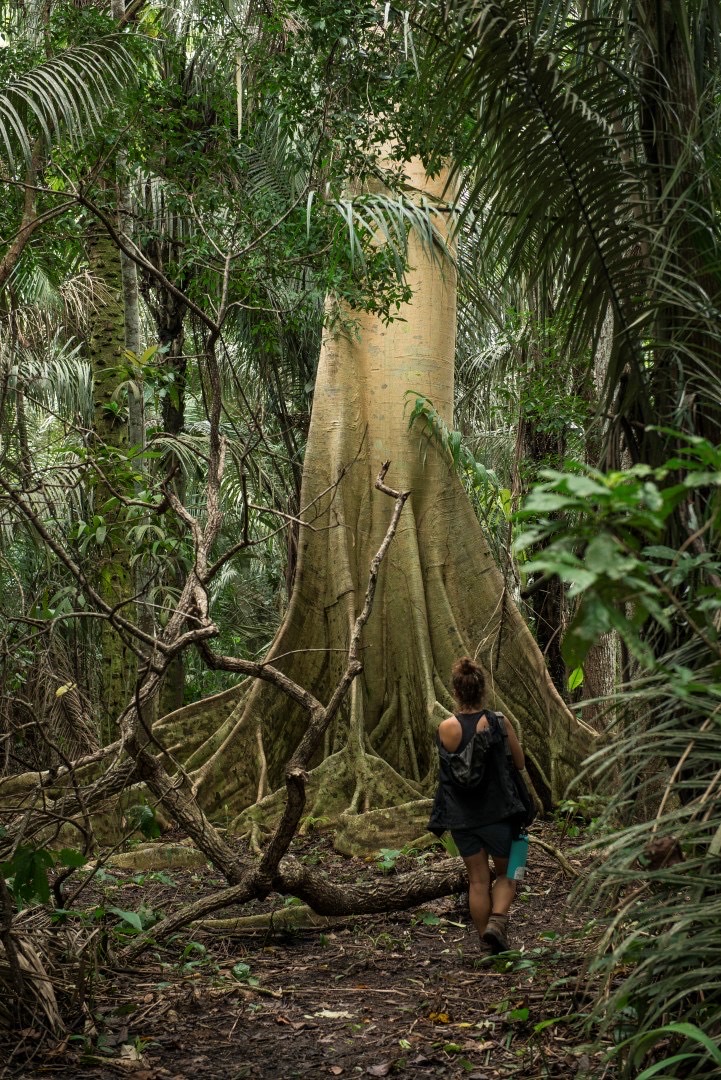
Sara Morrill in South America.
Reflecting on the Ceremony
Of course, not all initiates to the Sacred Garden have only blissful trips with the changa. One member recounted a terrifying experience after taking extra large hits from his pipe. Everything around him froze in time, and the people he was with turned into one-dimensional characters, cartoon-like. One of the ordained facilitators at the ceremony sensed his distress and came over to comfort him. Having received prior consent to platonic touch for support, the guide took his hand to reassure him.
His story is an important reminder of something the psychedelic pioneers Aldous Huxley and Humphrey Osmond pointed out way back in the 1950s, just as they coined the term. “To fathom hell or soar angelic, take a pinch of psychedelic.”
It’s not all rainbows and bliss. Suddenly altering one’s consciousness and sense of self, whether or not we do this “for a direct experience of the divine,” can be emotionally upsetting and existentially challenging.
Another church member at one of the two Redwood ceremonies I attended was surprised at the intensity of the changa experience. We were told to take just a small inhalation the first time for a gentle “handshake” with the sacrament.
“I would not call my experience gentle,” this member told me. “I remember thinking on the first inhale, ‘Wow, this is real magic! This is sorcery!’ As if in the time-frame of one breath, I could be instantly transported into another dimension entirely, filled with vibrant colors, geometrical patterns, and partial loss of my regular ego state. I did feel the presence of an ‘Other’ as I have heard described in the DMT state. Who or what that Other is, I cannot say.
“At the end of the first round, as my experience of consensual reality began to be pieced back together, I felt a sense of shame at having a human body — probably something to dig into with my therapist. At the end of the second round I found myself spontaneously bursting into tears. I had not been in any kind of melancholy state prior to the ceremony. When I discussed this in the integration conversation afterwards, I was told this is a good thing, that pent up energy can be released doing this work.”
Stanley, the church’s senior pastor and chief garden steward, estimates that about twenty percent of the changa participants “may report an experience of some challenging emotional content.”
“Connecting with the divine is not always a pleasant, euphoric or blissful experience,” he said. “We all carry suffering and alienation, as well as joy and insight. Our sacred practice can help us understand, learn and grow through that suffering and alienation. We can grow our capacity to experience who we are from a loving perspective, learn to let go of those behaviors that cause unnecessary suffering, and move more clearly and fully into divine presence.”
Main image: Sara Morrill

Did you miss our previous article...
https://yogameditationdaily.com/meditation-retreats/assist-develop-baja-meditation-center

